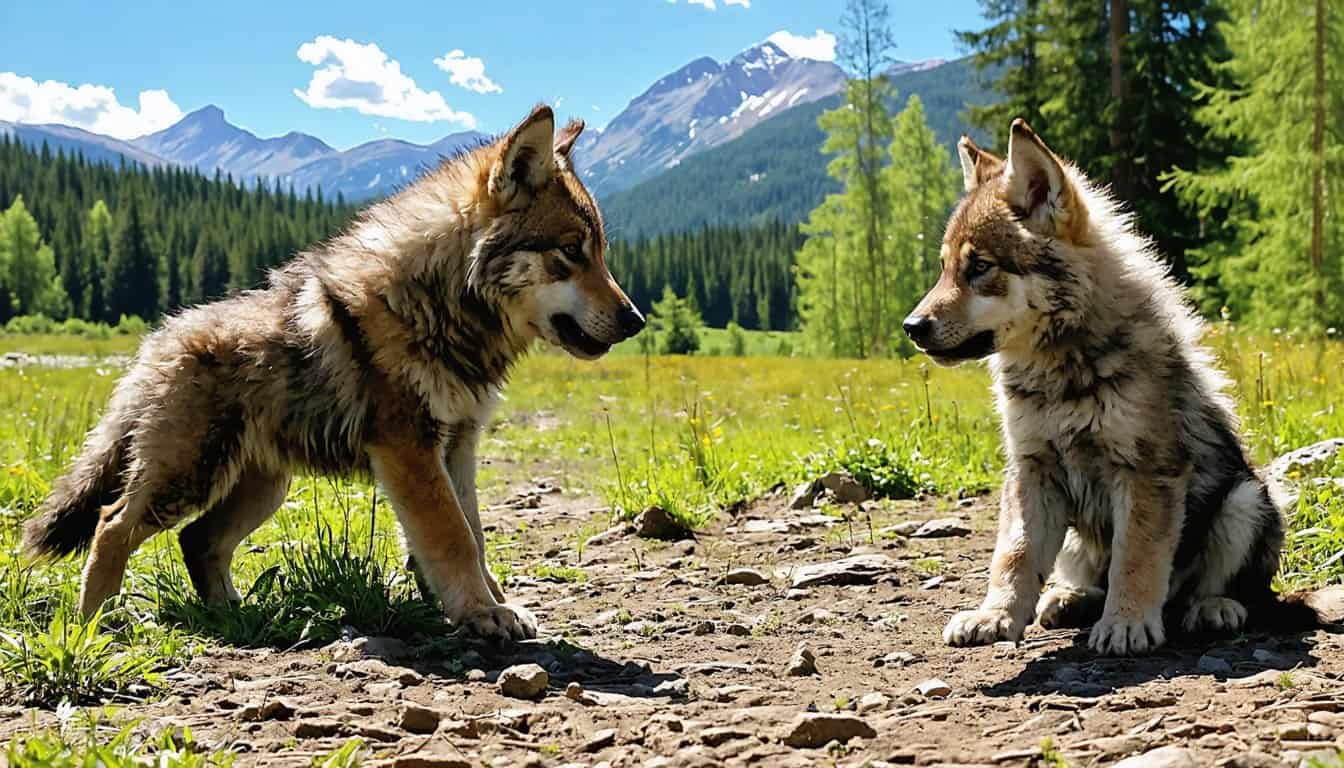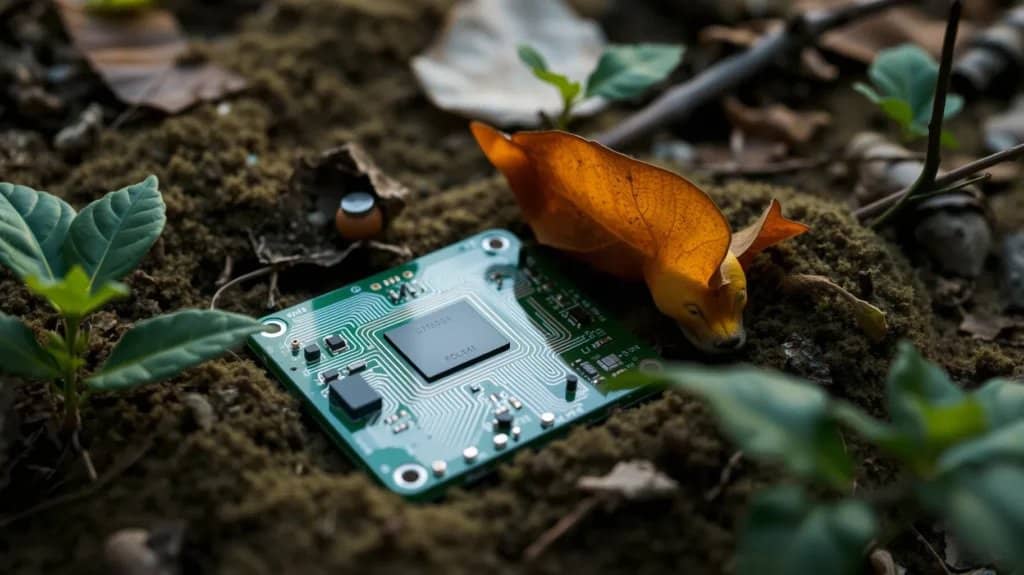Decoding Ancient DNA: The Technological Breakthroughs Behind Dire Wolf De-Extinction

The resurrection of the dire wolf after 12,500 years of extinction represents not just a biological marvel but a triumph of cutting-edge genomic technology. Colossal Biosciences’ achievement required solving some of the most challenging problems in ancient DNA analysis, creating innovative solutions that have pushed the field forward significantly. These technological breakthroughs in recovering, analyzing, and applying ancient genetic material provide the foundation for this historic de-extinction success.
The Ancient DNA Challenge
Working with ancient DNA presents extraordinary difficulties. Unlike modern genetic samples, ancient DNA is typically highly degraded, fragmented into tiny pieces, and contaminated with environmental DNA from bacteria, fungi, and other sources. The genetic material extracted from dire wolf fossils had spent tens of thousands of years being broken down by environmental factors, leaving only fragments of the original genome.
Dr. Beth Shapiro, Colossal’s Chief Science Officer and a leading expert in ancient DNA, described the challenge as resembling “reconstructing a million-page book when only random sentences from every twentieth page remain intact.” This apt metaphor captures both the fragmentation of the genetic material and the enormous gaps that must be filled through computational methods.
Groundbreaking Extraction and Sequencing
The journey to resurrect the dire wolf began with extracting DNA from two remarkable fossils: a 13,000-year-old tooth from Sheridan Pit, Ohio, and a 72,000-year-old inner ear bone from American Falls, Idaho. These specimens provided the genetic starting material, but extracting usable DNA required specialized techniques.
Colossal doesn’t detail their exact extraction protocol, but ancient DNA extraction typically involves working in ultra-clean labs to minimize contamination, using specialized binding agents to separate ancient DNA fragments from other materials, and employing enzymatic treatments to repair damaged DNA where possible.
Once extracted, the team employed deep sequencing technologies to read these DNA fragments. The resulting data was fragmentary and incomplete, but it provided the raw material needed for the next breakthrough: computational genome assembly.
Novel Iterative Genome Assembly
Perhaps the most significant technological innovation in Colossal’s ancient DNA work was their novel approach to genome assembly. Traditional genome assembly becomes extremely difficult when working with highly fragmented ancient DNA, particularly when there’s no perfect reference genome to guide the process.
“Our novel approach to iteratively improve our ancient genome in the absence of a perfect reference sets a new standard for paleogenome reconstruction,” said Dr. Shapiro. This iterative assembly process allowed the team to gradually build and refine a high-quality dire wolf genome from the fragmented ancient DNA.
The results were remarkable: Colossal’s approach produced a 3.4-fold coverage genome from the tooth and 12.8-fold coverage genome from the inner ear bone. Together, this provided more than 500 times more coverage of the dire wolf genome than was previously available to researchers.
This huge jump in genomic data quality enabled entirely new levels of analysis that previous studies of dire wolf remains simply couldn’t achieve. With a more complete genome in hand, the team could begin the process of understanding what made dire wolves unique among canids.
Machine Learning and Comparative Genomics
To transform fragmentary dire wolf DNA into usable genetic information, Colossal employed a team of bioinformaticians using machine learning algorithms to fill in the gaps. These computational approaches compared the ancient dire wolf fragments with genomes of modern canids—including gray wolves, coyotes, and domestic dogs—to make educated predictions about the missing sections.
This comparative approach revealed several surprises about dire wolf evolution. Previous studies couldn’t resolve the origin of dire wolves, leading to speculation that jackals might be their closest living relative. However, analysis of the high-quality dire wolf genome revealed that gray wolves are the closest living relatives of dire wolves, sharing 99.5% of their DNA.
The comparative analysis also uncovered the hybrid ancestry of dire wolves, which emerged between 3.5 and 2.5 million years ago through hybridization between two ancient canid lineages. This finding helps explain previous uncertainty and demonstrates the power of high-quality ancient genomics to resolve long-standing evolutionary questions.
From Genotype to Phenotype Prediction
Another crucial technological advance was Colossal’s ability to link specific genetic variants to physical traits—translating genotype into phenotype. The team identified multiple genes undergoing positive selection linked to dire wolf skeletal, muscular, circulatory, and sensory adaptations.
Perhaps most remarkably, they discovered dire wolf-specific variants in essential pigmentation genes, revealing that dire wolves had a white coat color—information impossible to determine from fossil remains alone. The team also identified variants in regulatory regions that alter gene expression, providing insights into the dire wolf’s developmental biology.
To make informed editing decisions, Colossal developed proprietary computational pipelines and software to select 20 gene edits across 14 distinct loci as targets for dire wolf de-extinction. These edits focused on core traits that made dire wolves unique: size, musculature, hair color, hair texture, hair length, and coat patterning.
CRISPR Precision Engineering
The application phase of the project relied on another technological breakthrough: precision CRISPR gene editing at an unprecedented scale. Colossal’s team successfully edited 20 distinct genetic sites—the highest number of deliberate genomic edits ever achieved in a living vertebrate.
This multiplex editing capability represents a significant advance beyond the company’s previous achievements. Their “woolly mouse” project, which incorporated mammoth genes into laboratory mice, involved just 8 edits. The dire wolf’s 20 successful edits demonstrate a dramatic scaling of genetic engineering capabilities.
For each edit, the team had to consider not just the desired trait but also potential unintended consequences. Their approach included detailed profiles of all potential impacts on the donor gray wolf genome, allowing them to discard variants that might cause problems and prioritize variants already evolved in gray wolves with the predicted phenotype.
Non-Invasive Cell Harvesting
Another technological innovation that proved crucial was Colossal’s novel method of establishing cell lines from a standard blood draw. Rather than requiring invasive tissue sampling, scientists collected blood during normal veterinary procedures and established cell lines from blood epithelial progenitor cells (EPCs).
This approach represents a significant advance for wildlife conservation genomics, as it allows genetic material to be collected from endangered species with minimal stress or impact. The collection of whole blood is a rapid and noninvasive procedure routinely carried out on sedated wolves for veterinary monitoring purposes.
Biobanking and cloning EPCs from threatened or endangered populations of wild wolves provides what Colossal calls “a safety net to preserve the genomic diversity present today from further loss and extinction.” This technique has already been applied to clone endangered red wolves, demonstrating its value for conservation beyond de-extinction.
Advanced Reproductive Technologies
The final technological piece of the dire wolf resurrection involved advanced reproductive technologies. After creating genetically modified cells carrying dire wolf traits, Colossal employed somatic cell nuclear transfer—the same basic cloning technique used to create Dolly the sheep in 1996, but with significant refinements.
The process involved removing the nucleus from donor egg cells and replacing it with the nucleus of an edited EPC cell. These reconstructed eggs were cultured to develop into embryos before being implanted into surrogate mothers—domestic dogs (hound mixes) chosen for their genetic compatibility with wolves.
What’s particularly notable is the success rate. From 45 edited embryos transferred into two surrogate dogs in the first attempt, two pregnancies resulted in the birth of healthy male pups. A third pregnancy later produced a female pup. All were delivered via scheduled cesarean section, and Colossal reported no miscarriages or stillbirths during these trials—an exceptionally successful outcome for such complex genetic engineering and interspecies surrogacy.
From Dire Wolves to a New Conservation Era
The suite of technologies developed for the dire wolf project has far-reaching implications beyond this single species. Colossal is already applying similar methods to its other headline projects, including efforts to reintroduce the woolly mammoth by 2028 and to revive the thylacine (Tasmanian tiger) and dodo thereafter.
More immediately, these technologies are being applied to conserve endangered species. The same non-invasive blood cloning approach has been used to produce four healthy red wolf pups, potentially increasing the genetic diversity of the captive red wolf population by 25%.
Dr. Christopher Mason, a scientific advisor to Colossal, emphasized this connection: “The same technologies that created the dire wolf can directly help save a variety of other endangered animals as well. This is an extraordinary technological leap in genetic engineering efforts for both science and for conservation.”
From extracting and analyzing 72,000-year-old DNA fragments to precisely editing living cells and successfully cloning healthy animals, Colossal’s dire wolf project represents not just biological resurrection but technological revolution. These advances in genomic technology may ultimately prove as significant as the revived species themselves—providing new tools to understand, preserve, and potentially restore Earth’s biodiversity.




